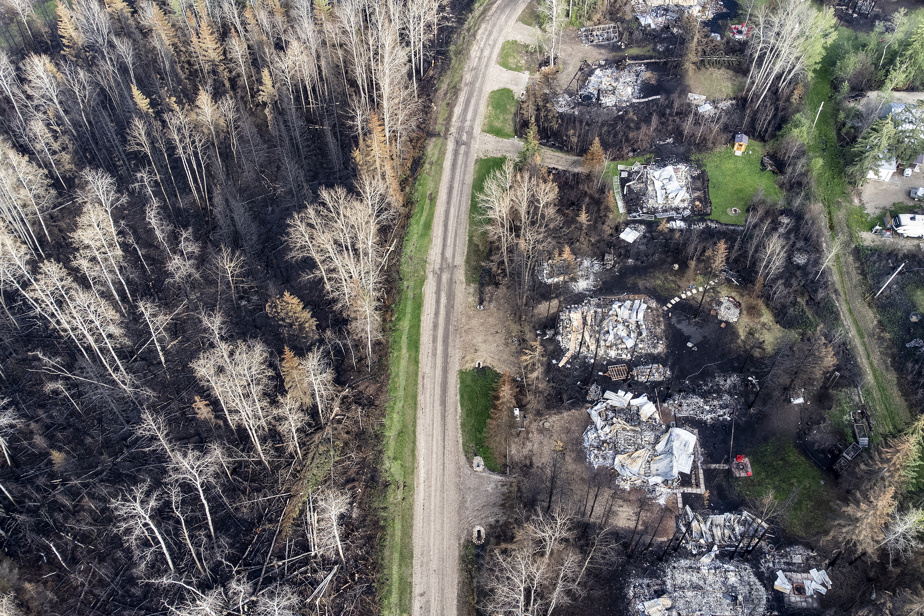(Halifax) Canadian homeowners and communities can reduce wildfire risks to buildings if they start taking steps such as creating buffer zones and using fire protection materials, a new study suggests. fire resistant construction.
The study released Sunday by the University of Waterloo’s Intact Center for Climate Adaptation notes that the 2023 wildfire season saw losses that shattered previous records set in 1995, with an area accounting for about a quarter of Manitoba’s land mass went up in flames.
The report, titled “Before the Flames,” says Canadians living in forest and prairie regions should follow “proven measures” that can reduce the risk of their homes catching fire “by up to 75 per cent.”
The document includes two infographics, with images showing practical actions that homeowners and communities can take.
The report notably calls on owners to store wood away from the house, to remove shrubs and other flammable materials near the foundations and to cut down trees within 10 meters of the building.
More complex steps include installing a fire-rated roof made of asphalt, fiber cement or metal, which can limit the risk of embers igniting a roof.
The study also recommends steps communities can take: removing tree branches near power lines, incorporating 30-meter buffer zones into community design, and ensuring adequate water supplies for firefighting.
The center’s research estimates that in areas at high risk of wildfires, communities could save $34 for every dollar invested in fire-resistant construction choices, and $14 for every dollar invested in retrofitting buildings and installations to make them more fire resistant.
The study reveals that 60% of Canadian communities are vulnerable to wildfires due to their proximity to forests and grasslands.
It says the risk of wildfires in these communities “is increasing due to expanding urban development, lack of nationally accepted building standards to guard against wildfires, accumulation of flammable vegetation near structures and increased fuels around communities as a result of 100 years of firefighting.”
At the same time, the paper argues that climate change plays a larger role, as it increases the annual number of days on which wildfires can occur.
“According to historical records, current wildfire seasons start about a week earlier and end a week later than 70 years ago,” the study notes.
“Scientists predict that by the end of the century, the fire season will be even longer, increasing by an average of 30 days per year, but will vary across the country, with western Canada facing an increase of 50 % of hot, dry days, and eastern Canada, an increase of 200 to 300%. »
Blair Feltmate, director of the center, said the report aims to help Canadians meet the goals set out in the federal government’s National Adaptation Strategy, which calls on communities in high-risk areas to “develop community-based prevention plans.” and wildfire mitigation by 2030, with up to 15% implemented by 2028.”
